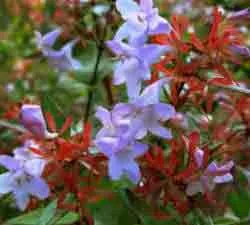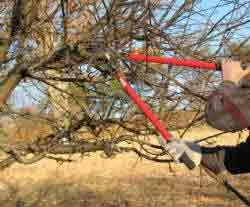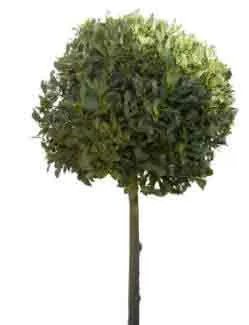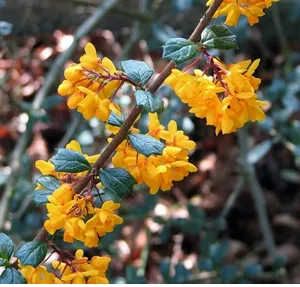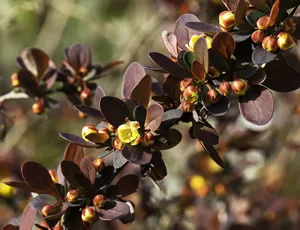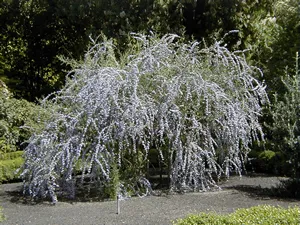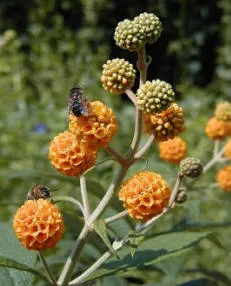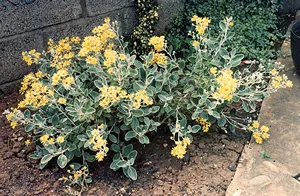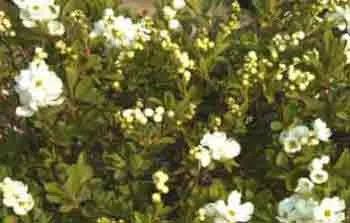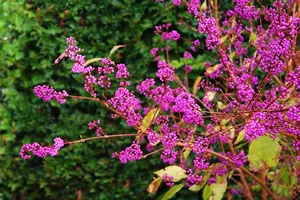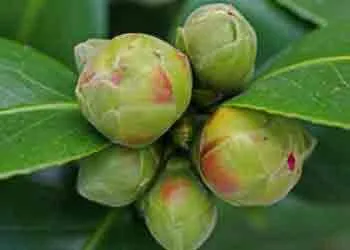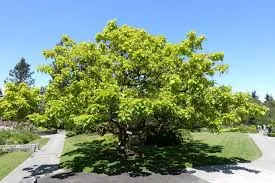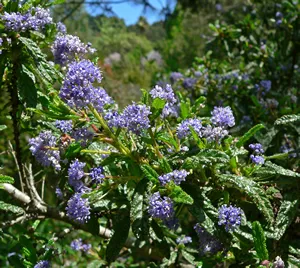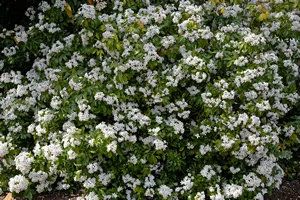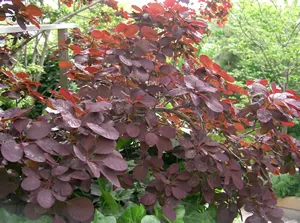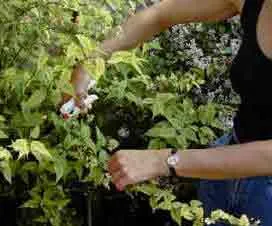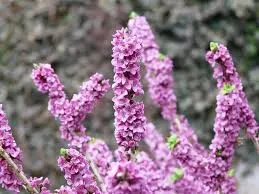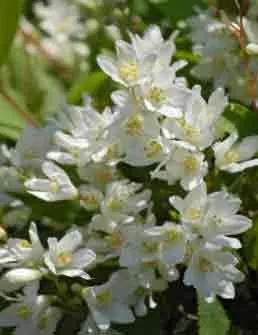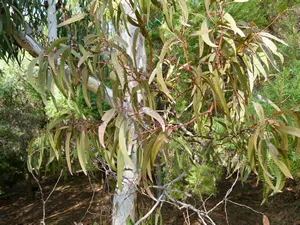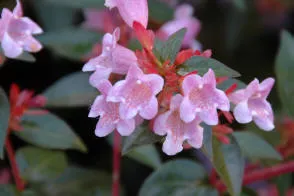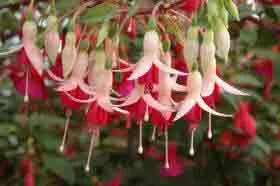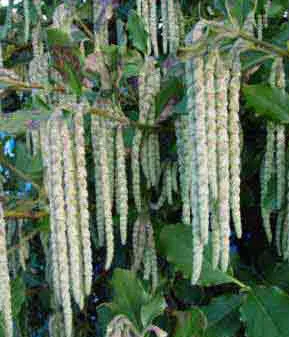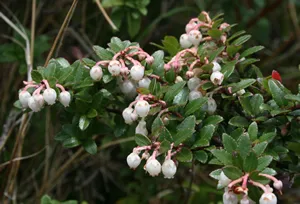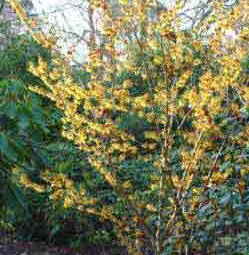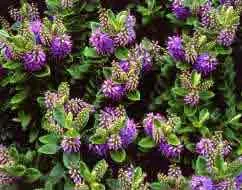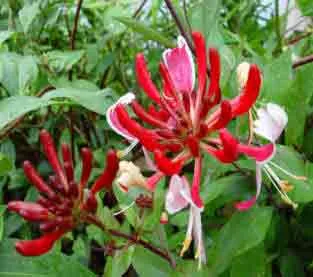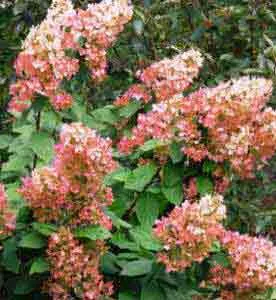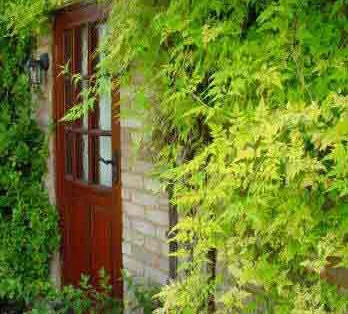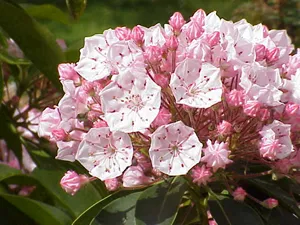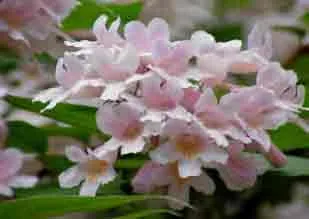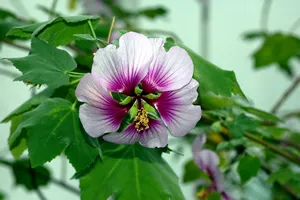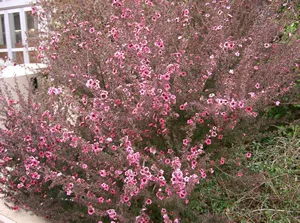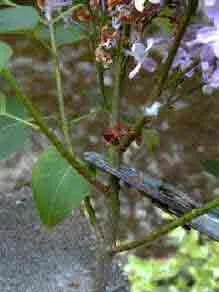Right after flowering, cut out all of the stems that have flowered - back to a good healthy pair of buds. Depending upon how vigorous your forsythia variety is, the pruning cuts may be from between 12 in (30cm) to 2ft (60cm) in length. At the same time - with an established shrub, it is a good idea to cut a few stems back down to within a few inches (cms) of the ground - say one out of every three stems pruned this way. This will encourage basal shoots to grow, which will keep the Forsythia well provided with strong stems to flower in later years.
This is a typical Forsythia stem that would be pruned out right after flowering has finished. The pruning cut would be right at the bottom of the picture. The stem will then re-grow during the year, to the same length as before.
Basically >>>
a/ Cut back flowered growths at least 1/3rd of the way back into the shrub, to a new young shoot; or a strong bud (Leaf joint)
b/ Cut some of the growth - about 25% - right back to within a few cm of the ground. This will produce nice basal growth, which in turn will be part of your framework for the following year. If you don't do this, then the shrub will simply get taller each year, with the flowering growth right at the top.
Pruning cuts well back into the growth. It is no use just trimming the ends off this shrub. Cut back well into the bush as shown, low down the flowered stem - ideally to a pair of strong new buds.
But DO remember to do this as soon as possible after the Forsythia has finished blooming in mid-spring.
It will take a few years - 2 - 3 to see the effect, but it is well worth the wait. Once your weeping, multi-stemmed Forsythia is establishes, then all of the pruning should be aimed at getting this waterfall of gold from the tops of the main stems. After a few years of growth, then you can annually cut out one in three of the weeping branches back to the main stem, to allow even more weeping branches over time. Now you see why you need the strong stake to hold it up - especially in strong winds.
Don't forget the lower cuts to force some basal growth. By cutting some of the main stems of your Forsythia bush back to near ground level, you will get a continued supply of new stems - which will ensure that your Forsythia shrubs flower from top to near bottom. Not just at the top of an untidy mess of a shrub.
Do this each year and you will get larger flowering branches - full of good coloured bell flowers, and afterwards, bright green foliage, which incidentally will be good for Autumn - Fall - colour. Gold to orange foliage.




